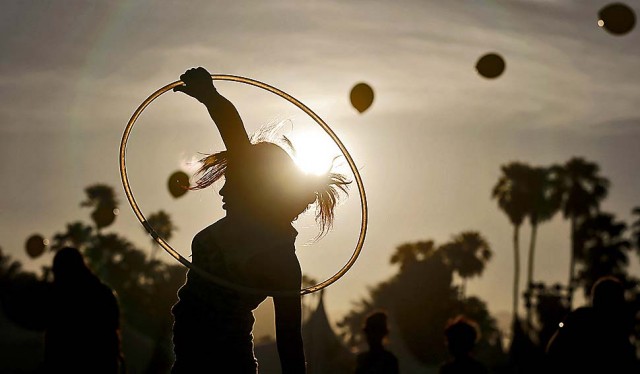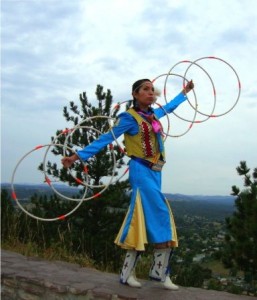
Flow is a relatively novel topic of interest in psychological research. The word “flow,” or experiencing what is known as a “flow state,” is used to encapsulate the phenomenon individuals experience while being completely absorbed in the task at hand while simultaneously performing at their optimal level.
From my own personal experience, I would like to believe that flow states are more readily achieved after one uses cannabis. However, before we explore that idea, let’s take a closer look at the concept of flow.
 Almost forty years ago, Mihalyi Csikszentmihalyi became interested in this phenomenon when he encountered artists, dancers, athletes and musicians. Csikszentmihalyi watched these individuals perform seemingly without effort in their chosen activity. Csikszentmihalyi was the first in his field to propose the concept of flow, which he defined using nine sub-factors that must be met in order to experience this peak state of consciousness.
Almost forty years ago, Mihalyi Csikszentmihalyi became interested in this phenomenon when he encountered artists, dancers, athletes and musicians. Csikszentmihalyi watched these individuals perform seemingly without effort in their chosen activity. Csikszentmihalyi was the first in his field to propose the concept of flow, which he defined using nine sub-factors that must be met in order to experience this peak state of consciousness.
The nine factors of flow, which are described below, help explain the conditions and overall subjective experience of the flow state. By understanding what contributing factors help individuals experience flow states, psychologists may be able to better understand how to enable people to experience more meaningful and happy lives.
But first, we must distinguish what flow is and identify in what ways flow may be related to positive clinical outcomes.
Csikszentmihalyi theorized that nine flow factors exist, and seven of these factors help characterize specific elements experienced by individuals during the phenomenon of flow. In other words, the following seven flow factors describe the phenomenology of flow.
- Action-awareness merging, one of the more core characteristics of flow, is when an individual is actively partaking in the activity at hand, both automatically and spontaneously. In other words, the individual is fully engaged and occupied diligently without the requirement of effort, thoughts or planning. The individual is responding almost spontaneously and instantaneously. Action-awareness merging is often loosely-referred to as “being in the zone.”
- Naturally, due to action-awareness merging, the individual forms a sense of concentration, which is maintained in order to execute one’s efforts effectively.
- A sense of control is developed over the task and one’s actions.
- While performing to the best of an individual’s ability, the individual continually receives unambiguous feedback. Unambiguous feedback allows the person to know how well he or she is performing during the given task.
- As this is occurring, a loss of self-consciousness takes place and therefore, allows the individual to be impervious to the concerns of others.
- Moreover, a transformation of time is reported, where people report time either standing still or passing by more rapidly as compared to normal.
- And finally, the individual has an autotelic experience, which translates to an overall intrinsically pleasing experience.
Csikszentmihalyi explains how the remaining two flow factors are best understood as pre-conditions or circumstances needed in order to achieve a flow experience in the first place.
The first flow factor that helps define the pre-conditions is “challenge-skill balance.” Challenge-skill balance is defined as feeling like one’s skill level is appropriately matched to the perceived challenges of the situation. In other words, challenge-skill balance involves the continuation and stretching of a person’s skills. The challenges always strengthen or reinforce an individual’s skill set, and the individual never becomes too overwhelmed or underwhelmed by the challenges presented.
Having a low set of skills for a highly challenging situation may result in anxiety, whereas having a high set of skills in a low challenging situation may result in boredom. Flow occurs when the individual is faced with a highly challenging situation and is also equipped with a high set of skills.
 The second flow factor that represents a pre-condition of this optimal experience is clear goals. Clear goals are essential to flow experiences because goals allow the individual to know exactly what is expected of them during the task.
The second flow factor that represents a pre-condition of this optimal experience is clear goals. Clear goals are essential to flow experiences because goals allow the individual to know exactly what is expected of them during the task.
I believe that cannabis assists the state of flow. Personally, I often use cannabis to relax both my body and my mind. I practice yoga and have been a hula hoop dancer for 5 years. Over the course of those skill-building years, I used cannabis regularly. I believe I would have been much harder on myself at points during my journey, if I had not taken much needed smoke breaks to allow my muscle memory to sink in a bit.
I also think it’s safe to say that flow states are more readily achieved when a person feels comfortable and confident in both their skills and their expectations for a given task (see challenge-skill balance above). Therefore, it seems to me that cannabis-users may greatly benefit from consuming cannabis prior to their given hobby or activity of choice, as it will allow them to become more relaxed, resulting in more easily experienced higher states of consciousness.
 If flow is more readily achieved after cannabis consumption, in turn, these individuals will more easily reap the benefits that come from flow states themselves. Previous research shows that flow states have been correlated with positive clinical outcomes, such as overall well-being, positive affect, and engagement. Carpentier, Mageau, and Vallerand discovered that flow positively correlated with higher meaning in life.
If flow is more readily achieved after cannabis consumption, in turn, these individuals will more easily reap the benefits that come from flow states themselves. Previous research shows that flow states have been correlated with positive clinical outcomes, such as overall well-being, positive affect, and engagement. Carpentier, Mageau, and Vallerand discovered that flow positively correlated with higher meaning in life.
A different study found that flow shared a positive correlation with greater positive affect in a sample of college students. Additionally, flow is associated with higher levels of student engagement when the conditions of the learning environment fostered the development of flow factors; for example, fostering challenge-skill balance and a sense of control. All of these studies highlight the links between flow and a range of positive outcomes.
Based on this previous research, and my propositions about how flow would positively correlate with cannabis use, it would be beneficial for future studies to include cannabis as a prerequisite in order to see if the presence of cannabis alone allows for a more readily achieved flow state.
References
Carpentier, J., Mageau, G. A., & Vallerand, R. J. (2012). Ruminations and flow: Why do people with a more harmonious passion experience higher well-being? Journal Of Happiness Studies, 13(3), 501-518. doi:10.1007/s10902-011-9276-4
Collins, A., Sarkisian, N., & Winner, E. (2009). Flow and happiness in later life: An investigation into the role of daily and weekly flow experiences. Journal Of Happiness Studies, 10(6), 703-719. doi:10.1007/s10902-008-9116-3
Csikszentmihalyi, M. (2000). Beyond boredom and anxiety. San Francisco, CA US: Jossey-Bass.
Nakamura, J. & Csikszentmihalyi, M. (2002). The Concept of Flow, The Handbook of Positive Psychology: Oxford University Press, pp. 89–92, ISBN 978-0-19-513533-6
Rogatko, T. (2009). The influence of flow on positive affect in college students. Journal Of Happiness Studies, 10(2), 133-148. doi:10.1007/s10902-007-9069-y
Shernoff, D. J., Csikszentmihalyi, M., Shneider, B., & Shernoff, E. (2003). Student engagement in high school classrooms from the perspective of flow theory. School Psychology Quarterly, 18(2), 158-176. doi:10.1521/scpq.18.2.158.21860
Sinnamon, S., Moran, A., & O’Connell, M. (2012). Flow among musicians: Measuring peak experiences of student performers. Journal Of Research In Music Education, 60(1), 6-25. doi:10.1177/0022429411434931









